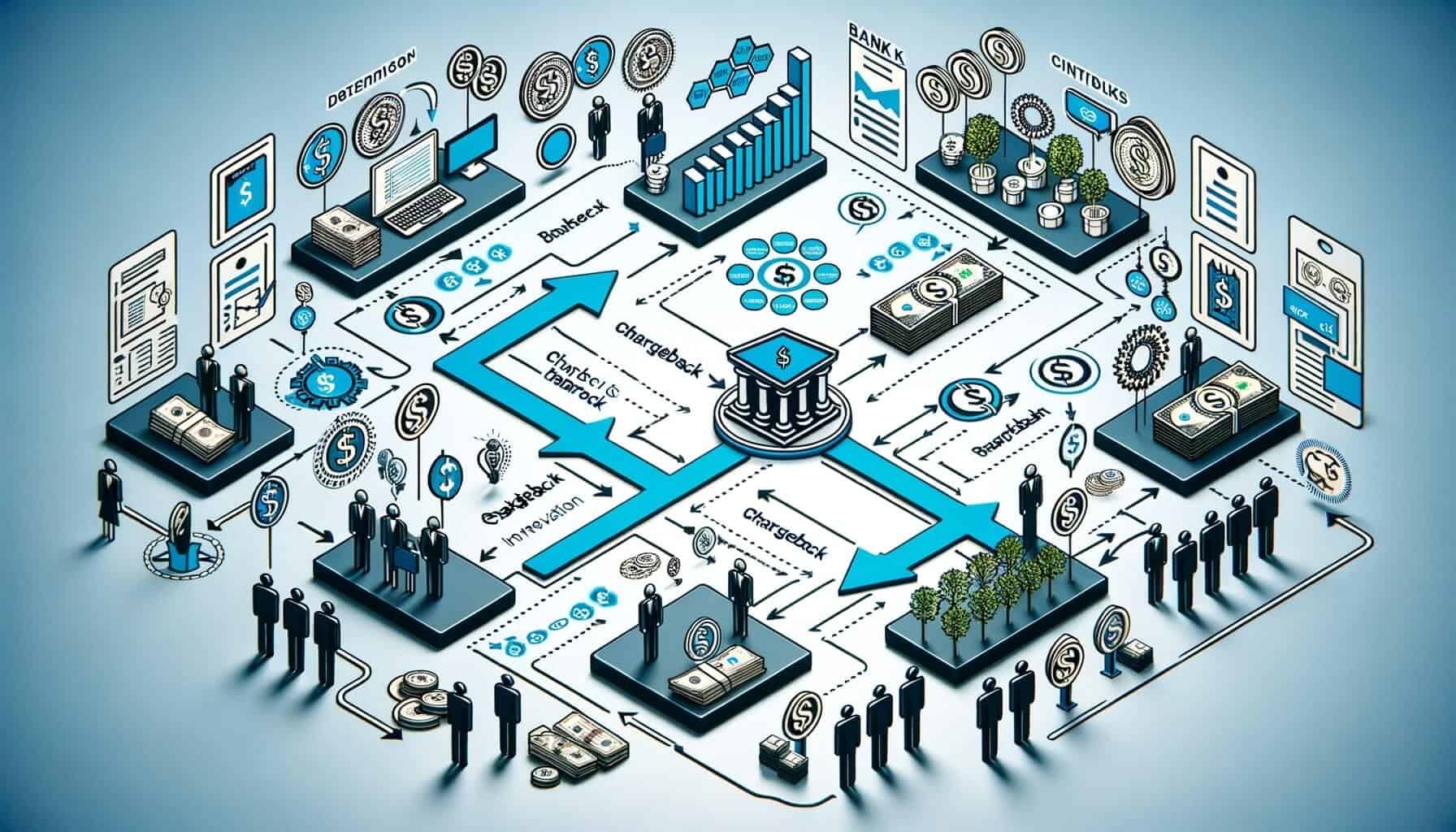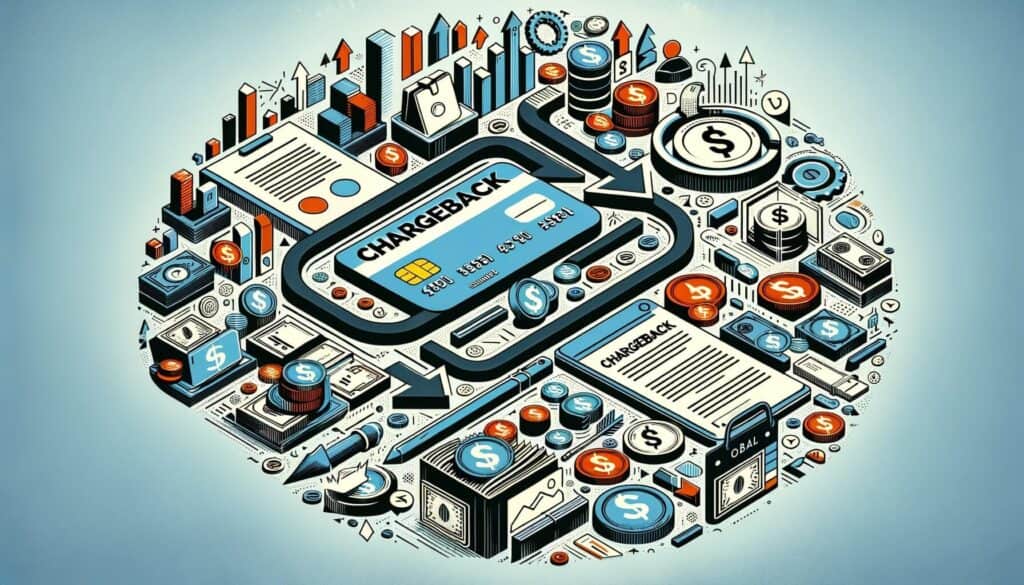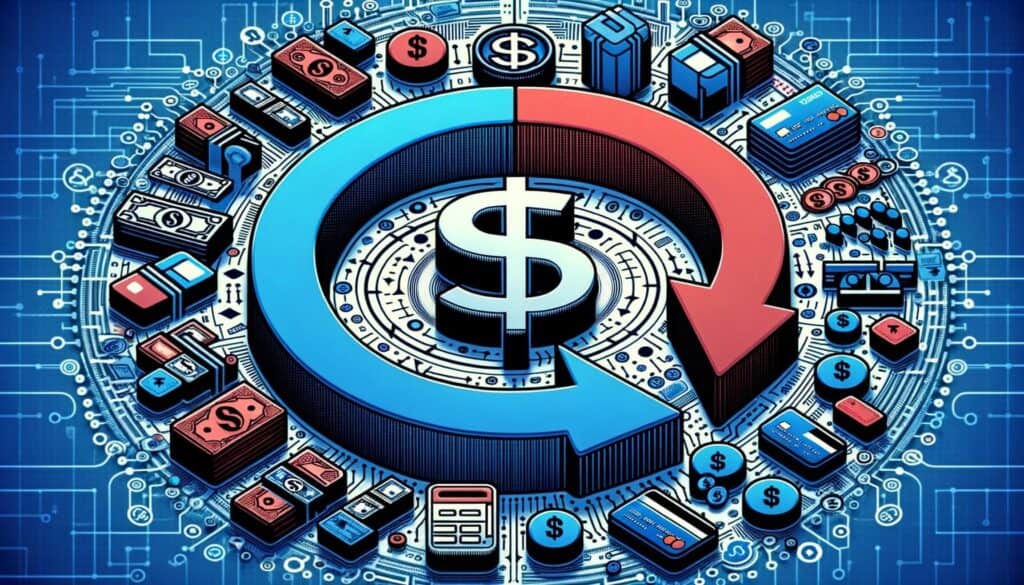
By Mollie Mills April 26, 2025
In today’s digital age, where online transactions have become the norm, the occurrence of chargebacks has increased significantly. A chargeback is a process that allows consumers to dispute a transaction and request a refund from their bank or credit card issuer.
While chargebacks are commonly associated with credit card transactions, there is a specific type known as a bank chargeback. In this comprehensive article, we will delve into the world of bank chargebacks, exploring their definition, process, and key differences from other chargebacks.
Understanding the Concept of Chargebacks

Before we dive into the specifics of bank chargebacks, it is essential to have a clear understanding of chargebacks in general. A chargeback is a consumer protection mechanism that allows individuals to reverse a transaction and receive a refund. It acts as a safety net for consumers who have been victims of fraud, received defective goods, or experienced unauthorized transactions.
Chargebacks are typically initiated by the cardholder, who contacts their bank or credit card issuer to dispute a transaction. The bank then investigates the claim and, if deemed valid, reverses the transaction and credits the cardholder’s account. This process provides consumers with a sense of security and encourages them to engage in online transactions without fear of financial loss.
Types of Chargebacks: A Comprehensive Overview

Chargebacks can be categorized into various types based on the reason for the dispute. Some common types of chargebacks include fraud-related chargebacks, service-related chargebacks, and product-related chargebacks.
Fraud-related chargebacks occur when a cardholder notices unauthorized transactions on their account. This could be a result of identity theft or a compromised card. In such cases, the cardholder can initiate a chargeback to reclaim their funds and protect themselves from further fraudulent activity.
Service-related chargebacks arise when a consumer is dissatisfied with the services provided by a merchant. This could include issues such as poor customer service, failure to deliver promised services, or misrepresentation of the product or service. In such cases, the cardholder can request a chargeback to obtain a refund for the subpar service received.
Product-related chargebacks occur when a consumer receives defective or damaged goods, or when the product does not match the description provided by the merchant. In these instances, the cardholder can initiate a chargeback to recover their funds and return the faulty product.
Exploring Bank Chargebacks: Definition and Process

Now that we have a solid understanding of chargebacks, let’s focus on bank chargebacks specifically. A bank chargeback, also known as an ACH (Automated Clearing House) chargeback, occurs when a consumer disputes a transaction that was processed through their bank account. Unlike credit card chargebacks, which involve credit card issuers, bank chargebacks involve the consumer’s bank directly.
The process of initiating a bank chargeback is similar to that of a credit card chargeback. The cardholder contacts their bank and provides details of the disputed transaction, including the date, amount, and reason for the dispute. The bank then investigates the claim, reaching out to the merchant’s bank to gather additional information. If the bank determines that the chargeback is valid, they will reverse the transaction and credit the cardholder’s account.
Key Differences between Bank Chargebacks and Other Chargebacks

While the concept of chargebacks remains the same across different payment methods, there are some key differences between bank chargebacks and other chargebacks. One significant difference is the involvement of the consumer’s bank in the process. With credit card chargebacks, the card issuer acts as an intermediary between the cardholder and the merchant. In bank chargebacks, however, the consumer deals directly with their bank.
Another difference lies in the timeframes for initiating a chargeback. Credit card chargebacks typically have a time limit of 60-120 days from the transaction date, depending on the card issuer’s policies. Bank chargebacks, on the other hand, often have longer timeframes, ranging from 60-180 days. This extended timeframe allows consumers to dispute transactions that may have taken longer to identify as fraudulent or problematic.
Factors Influencing Bank Chargebacks
Several factors can influence the occurrence of bank chargebacks. One significant factor is the rise in online transactions. With the increasing popularity of e-commerce, more consumers are engaging in online shopping, making them susceptible to fraudulent activities and unsatisfactory experiences. This, in turn, leads to a higher number of bank chargebacks.
Another factor is the lack of proper communication between merchants and consumers. Misunderstandings or miscommunications regarding product descriptions, delivery times, or refund policies can result in dissatisfied customers resorting to chargebacks. Merchants must ensure clear and transparent communication to minimize the occurrence of chargebacks.
Additionally, the overall customer experience plays a crucial role in determining the likelihood of chargebacks. If a consumer has a positive experience with a merchant, they are less likely to initiate a chargeback. However, if they encounter difficulties in obtaining refunds, face unresponsive customer service, or receive subpar products or services, they are more likely to resort to chargebacks.
Step-by-Step Guide to Initiating a Bank Chargeback
Initiating a bank chargeback can be a complex process, but with the right guidance, it can be navigated smoothly. Here is a step-by-step guide to help consumers initiate a bank chargeback effectively:
1. Gather evidence: Collect all relevant documentation related to the disputed transaction, including receipts, emails, and any communication with the merchant.
2. Contact the bank: Reach out to the bank’s customer service department and inform them of the disputed transaction. Provide all necessary details, including the date, amount, and reason for the dispute.
3. Complete the dispute form: The bank may require the cardholder to fill out a dispute form. Provide accurate and detailed information to support your claim.
4. Submit supporting evidence: Attach all relevant documentation to the dispute form, ensuring that it strengthens your case.
5. Follow up with the bank: Stay in touch with the bank to track the progress of your dispute. Be prepared to provide any additional information or documentation requested by the bank.
6. Await the bank’s decision: The bank will investigate the claim and make a decision based on the evidence provided. This process may take several weeks, so it is important to be patient.
7. Receive the outcome: Once the bank reaches a decision, they will inform you of the outcome. If the chargeback is approved, the bank will reverse the transaction and credit your account.
Tips for Avoiding Bank Chargebacks
While bank chargebacks provide consumers with a safety net, it is always preferable to avoid them whenever possible. Here are some tips to help consumers minimize the occurrence of bank chargebacks:
1. Read the terms and conditions: Before making a purchase, carefully read the merchant’s terms and conditions, including their refund and return policies. Understanding these policies can help you make informed decisions and avoid potential disputes.
2. Communicate with the merchant: If you have any questions or concerns about a product or service, reach out to the merchant directly. Clear communication can help resolve any issues before they escalate to a chargeback.
3. Keep records: Maintain a record of all transactions, including receipts, order confirmations, and any communication with the merchant. These records can serve as evidence in case of a dispute.
4. Be cautious with online transactions: When making online purchases, ensure that the website is secure and reputable. Look for trust indicators such as SSL certificates and customer reviews to gauge the merchant’s credibility.
5. Monitor your bank account: Regularly review your bank account statements to identify any unauthorized transactions or discrepancies. Promptly report any suspicious activity to your bank to prevent further fraudulent charges.
Common FAQs about Bank Chargebacks
Q1. What is the difference between a bank chargeback and a credit card chargeback?
Answer: A bank chargeback involves disputing a transaction processed through a bank account, while a credit card chargeback involves disputing a transaction made with a credit card.
Q2. Can I initiate a bank chargeback for a transaction made with a credit card?
Answer: No, bank chargebacks are specific to transactions made through a bank account. For credit card transactions, you would need to initiate a credit card chargeback.
Q3. How long do I have to initiate a bank chargeback?
Answer: The timeframe for initiating a bank chargeback varies, but it is typically between 60-180 days from the transaction date.
Q4. Can I initiate a bank chargeback for a transaction made in a different currency?
Answer: Yes, you can initiate a bank chargeback for a transaction made in a different currency. The bank will convert the amount to your local currency for the dispute process.
Q5. What happens if my bank chargeback is denied?
Answer: If your bank chargeback is denied, you may have the option to escalate the dispute or explore other avenues for resolution, such as contacting the merchant directly or seeking legal advice.
Conclusion
Bank chargebacks play a crucial role in protecting consumers from fraudulent activities and unsatisfactory experiences. Understanding the concept of chargebacks, including bank chargebacks, is essential for consumers to navigate the world of online transactions confidently.
By following the step-by-step guide to initiating a bank chargeback and implementing the tips for avoiding chargebacks, consumers can ensure a secure and seamless shopping experience. Remember, while chargebacks provide a safety net, it is always preferable to resolve disputes directly with the merchant whenever possible.